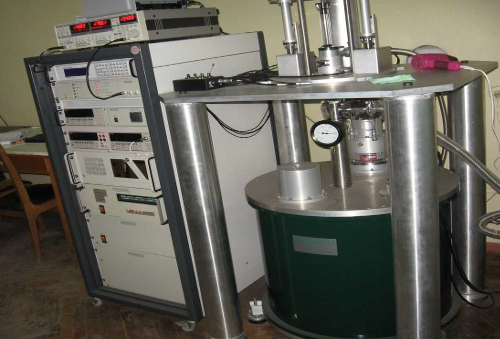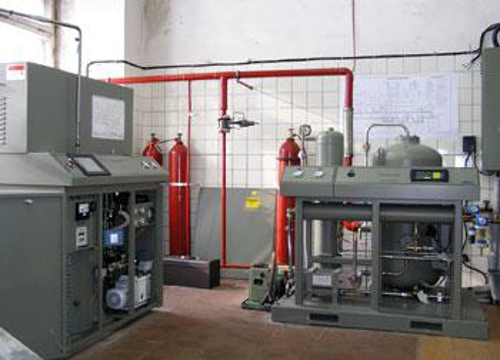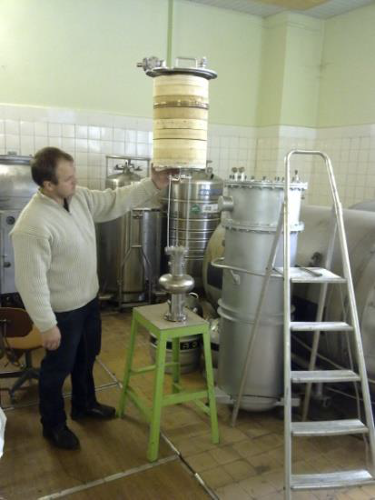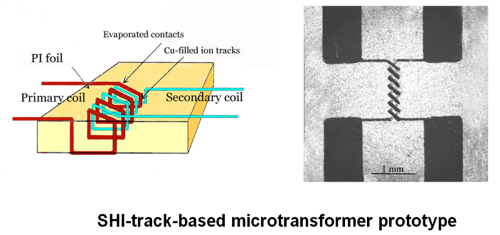|
Research Facilities
SSPA Scientific and Practical Materials Research Centre of the NAS of Belarus 
Division of Cryogenic Research 
  |
– Automated high-temperature resistive thermal setup for the synthesis of complicated metal oxides in various gaseous media, where temperature is supported by means of the RIF-101 temperature regulator and controlled by a Pt–Pt/Rh(10%) thermocouple with an accuracy of ± 0,5 К. |
Work developed by BAS Team
  |
Cryogenic hyperconducting transformer The transformer for space applications was developed and created by a contract with NASA. Its windings were made from the high purity Al foil, which made it possible to achieve current density value up to 200 A/mm2 at liquid hydrogen cooling. |
  |
Cryogenic superconducting resonator Super high frequency resonator made from the high – purity superconducting Nb is intended to be used in an electronic linear collider. Cryogenic testing on frequency 1.1 GHz bears witness of the Q-factor higher than 109. |
 |
Composite material on the base of the highly pure aluminum The principle of creation of the composite material is based on the placement of highly-pure aluminum fibres into the matrix of high-strength Al alloy, which is suitable for their joint working and operation. As a metal-matrix have been used the Al-Mn-Mg alloy with the 94% aluminum content, which has a high yield limit σу = 360 МPа and Т = 4.2 K, and also heat conductivity and linear expansion coefficient being close to those of pure Al. During the fabrication of the multi-fibre conductor, in each of tubes of Al alloy, rods of pure aluminum with RRR ~ 10000, and after that the ingots are placed in a tube with a diameter of 35 mm from the similar Al alloy. The combined billet undergoes radial pressing at Т =180ºС. On the final stage the composite material obtains a form of flat busbar with a rectangular cross-section, and with that the scheme of current-carrying fibres, surrounded by the strengthening matrix, is not violated. The RRR value of this busbar equals to 2700 – 800 in the helium-neon temperature range (4.2 – 28 K). This evidences both that the composite material is a very promising one, and the efficiency of the technology of its fabrication, which provides a reliable electrical and thermal contact of the matrix and the conductor. |
  |
Using of the Swift Heavy Ion track technology for the creation of micro- and nanoelectronic devices The Swift Heavy Ion (SHI) track technology is suggested for the creation of micro- and nanoelectronic devices on the base of polymer foils (together with the Helmholtz Zentrum fuer Materialen und Energie, Berlin, Germany). In frames of this research, the first prototypes of micromagnets, micro-transformers and microcapacitors on the base of polyimide (PI) foils with etched ion tracks, filled by pure metals by the Electrodeless (ELD) deposition technique through special masks, have been created. A quality factor of the micromagnet prototype is up to ~7 at working frequency of about 0.5 GHz, and a coupling factor of microtransformers is about 90%. The microcapacitor prototype is characterized by a practically frequency-independent capacity of about 0.5 pF – 0.6 pF up to 1 GHz. Possible applications of the ion-track-based devices include their use in the anticollision radar systems, space applications and novel data storage systems. |
